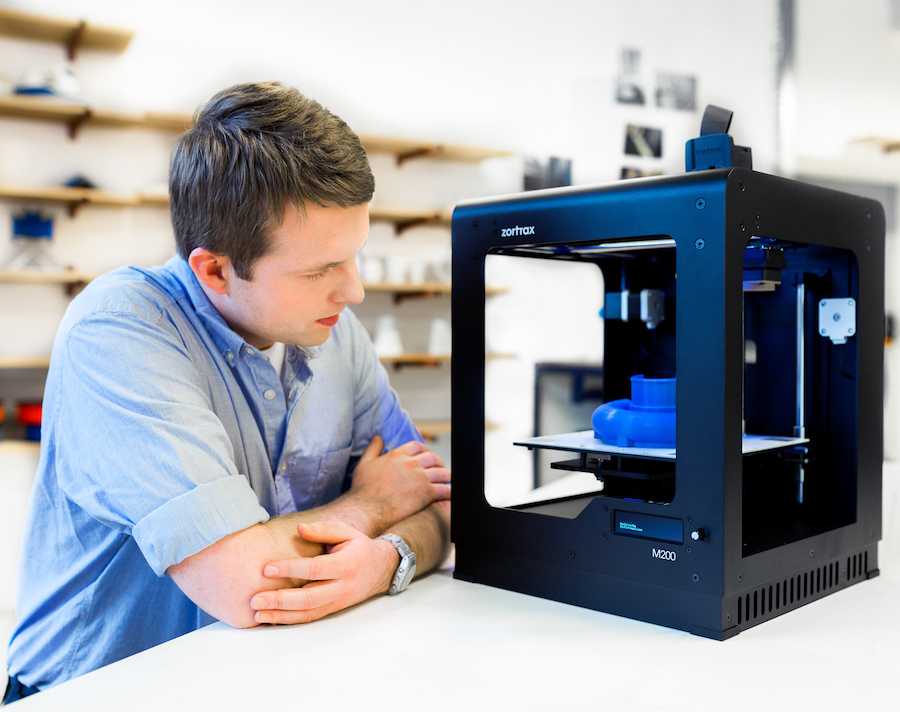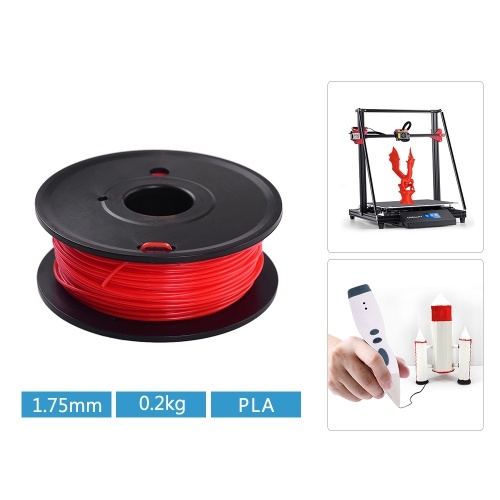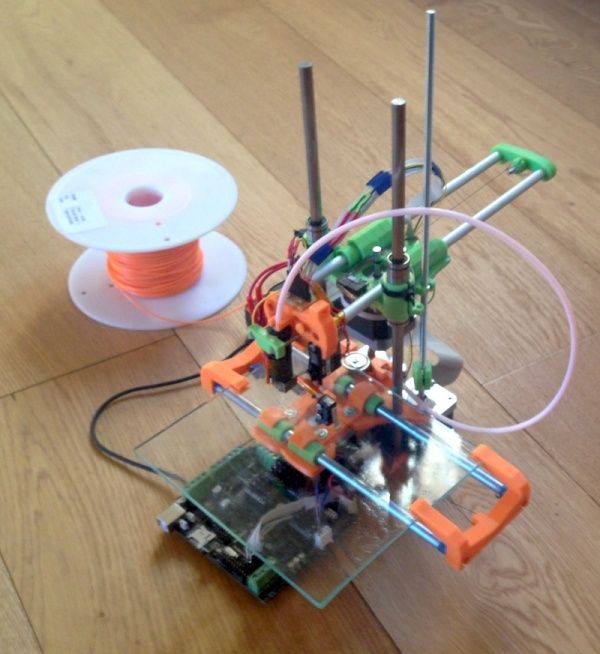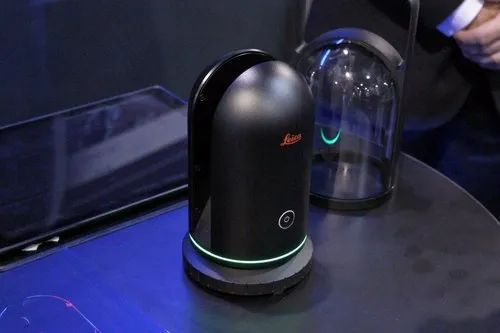Best commercial 3d printer
Commercial & Professional 3D Printer Buyer's Guide 2022 (Under $10,000)
Commercial 3D printers are changing how small businesses manufacture, how designers create and iterate, and how schools, healthcare professionals and engineers work.
These professional 3D printers, more expensive than standard desktop 3D printers but less than $10,000+ industrial 3D printers, allow small businesses to be more effective than ever in prototyping and improving their products.
This article focuses on highlighting the best commercial 3D printers, also known as prosumer 3D printers, production 3D printers, commercial grade 3D printers, or high end 3D printers, that are capable of producing professional-grade parts at decent scale, but cost less than $10,000. We therefore categorize commercial 3D printer price as up to $10,000, with no low end price provided it meets professional and small business 3D printer requirements.
What to expect in a commercial 3D printer?
Commercial grade 3D printers can take many forms: some need an FDM 3D printer that can 3D print PEEK or Ultem filaments, create extremely precise prototypes, or create multi-colored architectural models.
On the other hand, you may need a professional resin 3D printer to create ultra smooth resin prototypes for dental, aesthetic prototypes for items like sunglasses, and much more.
You may also be looking for a professional SLS 3D printer — though they often cost more than $10,000 — for high quality PA12 prototypes, functional parts, and various useful parts for engineers and designers.
Generally however, you should expect the following from a professional 3D printer:
- Commercial grade 3D printing performance: such as powerful heated chambers in FDM 3D printers for tougher material printing and systems for consistent and accurate printing.
- Wide material compatibility: with heated beds and extruders that can reach high temperatures for printing tougher filaments like Nylon, PC, PP, and perhaps even Ultem or PEEK.
- Fast printing and workflow: the best 3D printers for small businesses not only print quickly (at least twice the speed of desktop printers), but the entire workflow — from CAD software, to slicing, to printing, and then to iterating again — needs to be efficient for overall rapid prototyping.

- Very accurate: where resin 3D printers and SLS printers have advantages are in accuracy and surface finish. Resin printers can reach precisions that FDM printers cannot, so for precise and intricate models, such as characters for films or games, or wax molds for casting into precious metal jewelry, they’re ideal commercial 3D printers. SLS 3D printers require less post processing as they do not print with supports, making them ideal production 3D printers for ready-to-go prototypes made from Nylon.
- Large printing area: commercial 3D printers should have large enough build areas to support either large prototypes, or the printing of multiple small parts simultaneously, as a scalable production 3D printing system. 3D printers for commercial uses we recommend are typically larger for effective batch production 3D printing.
Our commercial 3D printer comparison sorts low to high price, making recommendations on the best 3D printer for business, for production, and many other 3D printers for different commercial uses.
Prusa i3 MK3S+ — low cost commercial 3D printer for small businesses on a budget
- Price: $999 fully assembled — Available on Prusa Store here / $749 as a kit — Available on Prusa Store here
- Build volume: 250 x 210 x 210 mm
With a price of under $1,000 you’d expect the Prusa i3 MK3S to be limited to standard consumer uses like printing fun models from Thingiverse, or fun basic 3D printing projects. However, it excels far beyond this, functioning as one of the best 3D printers for small businesses if you’re on a tight budget.
It can’t compete with higher end 3D printers in some areas, like size of build area, but it’s a fantastic commercial 3D printer for standard size prototypes in materials like PETG, ASA, Nylon, PC, PP, HIPS, and carbon fiber filaments.
Prusa 3D printers are known for their reliability and with an above 200mm/s travel speed, it’s fairly quick for the price. These factors, combined with precise 50-micron minimum layer heights, make it a great overall commercial 3D printer for professional and precise prototype production.
For those looking for a larger 3D printer, a 3D printer for materials like PEEK, or more precise resin 3D printers, keep reading.
Ultimaker S3 — accurate commercial 3D printer for high quality prototypes
- Price: $4,080 — Available on Dynamism here / Available on Matterhackers here
- Build volume: 230 x 190 x 200 mm
The Ultimaker S3 follows the incredibly popular Ultimaker 3, and is an effective production 3D printer for small businesses and engineers capable of fantastic 20-micron resolutions. It can extrude composite filaments from either of its extruders, and can easily print soluble filaments with the dual extruder for easier post processing.
Ultimaker created and develop Cura, the world’s most loved 3D slicer, but also offer more professional 3D printer software as part of their Enterprise packages for commercial 3D printing needs. These premium 3D printer options include the ability to open CAD files in Cura, unlimited storage of your parts in their digital parts library, as well as integrating 3D modeling software like SolidWorks and Autodesk Inventor into your workflow with their plugins.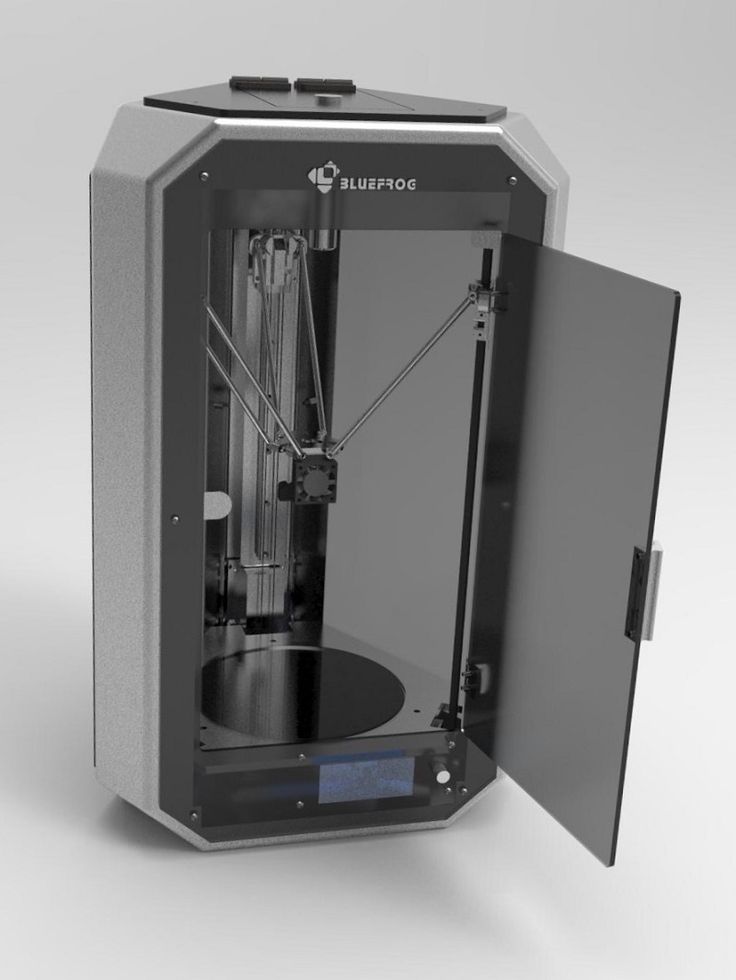 All these make for an efficient commercial 3D printing workflow for quick and effective iterating and part production.
All these make for an efficient commercial 3D printing workflow for quick and effective iterating and part production.
The touchscreen is easy to navigate, and WiFi connectivity makes it quick to access and print your files remotely in their digital library.
As a professional 3D printer, Ultimaker serve not just 3D printers for small businesses, but also huge clients like Volkswagen. The German multinational used Ultimaker 3D printers to produce over 1,000 parts, remarking on the productivity and ergonomics of Ultimaker’s printers.
The only factor affecting the Ultimaker S3’s usefulness as a full professional grade 3D printer is the build volume size, which could be larger. However, Ultimaker also offer the S5 for larger print needs, so read on for more information on this.
Ultimaker S5 — all-round excellent production 3D printer
- Price: $6,355 — Available on Dynamism here / Available on Matterhackers here
- Build volume: 330 x 240 x 300 mm
The Ultimaker S5 is the big brother of the already very powerful S3, and a commercial grade 3D printer for high quality engineering parts and accurate prototypes.
The main difference between the S3 and S5 is the larger print volume, a major improvement for those looking for a 3D printer for their small business capable of large prototype printing. It still features the same workflow options, dual extrusion, 20-micron layer heights, and trademark reliability and and precision.
However, you can also turn the S5 into a scalable production 3D printer with the Ultimaker’s S5 Pro Bundle for another few thousand dollars. This bundle adds both a spool holder and top filter. The material handler can hold up to six filament spools, and can automatically change them in and out for different uses as well as protecting filaments from moisture that would deteriorate print quality and protect them from dust, with the environment control filtering out fumes.
- The Ultimaker S5 Pro Bundle costs around $9,550 — Available on Dynamism here / Available on Matterhackers here
The Pro Bundle turns the S5 into the complete commericial 3D printer, able to print continuously, accurately, large parts — everything except super high grade material printing like PEEK and Ultem.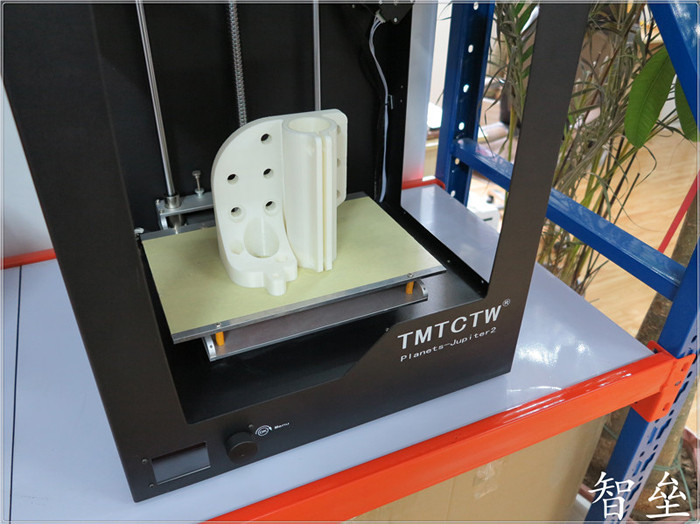 The Ultimaker S5, alongside the S5 Pro Bundle with material holder and environment control add-ons.
The Ultimaker S5, alongside the S5 Pro Bundle with material holder and environment control add-ons.
Formlabs Form 3 — precise professional 3D printer for accurate resin parts
- Price: $3,499 — Available on Dynamism here
- Build volume: 145 x 145 x 185 mm
The Form 3 is sold as a professional quality 3D printer at desktop prices, building on the Form 2’s stellar reputation with incredible resolutions and able to create parts you can barely see the individual layer lines on.
Featuring their LFS (low force stereolithography) tech, layer spot clarity, as well as consistency, surface quality and better translucent material printing are some of the improvements made to the Form 3.
For production engineers looking for a workhorse production 3D printer that can go non-stop, the Form 3 is more than capable, with data on ongoing print performance constantly relayed and alerts if print performance changes so you can make alterations.
You can print in standard resins, or castable wax for jewelry casting, as well as specialized biocompatible commercial grade 3D printing resins for dental uses — which you should instead get the Form 3B for.
Their PreForm software makes preparing your prints easy, and if you’re looking to scale up to a 3D printing factory with multiple printers Formlabs have specialized consulting teams to help, and offer software for managing multiple 3D printers simultaneously.
Raise3D Pro2 Plus — large production 3D printer for small businesses
- Price: $5,999 — Available on Dynamism here / Available on Matterhackers here
- Build volume: 305 x 305 x 605 mm
A true workhorse production 3D printer, the Raise3D Pro2 Plus can work 24/7 without much issue. Able to reach 300°C extruder temperatures, printing with filaments ranging from HIPS, ASA, PP, PVA, flexible filaments like TPU and TPE, Nylon, glass, carbon fiber, metal and wood filled filaments is no problem.
As well as the huge build volume and wide material compatibility, the Raise3D Pro2 Plus also offers great precision, with up to 0.01 mm layer heights and 5-micron repeatability. You can change the nozzle out to a smaller or larger one depending on whether your project favors speed or precision.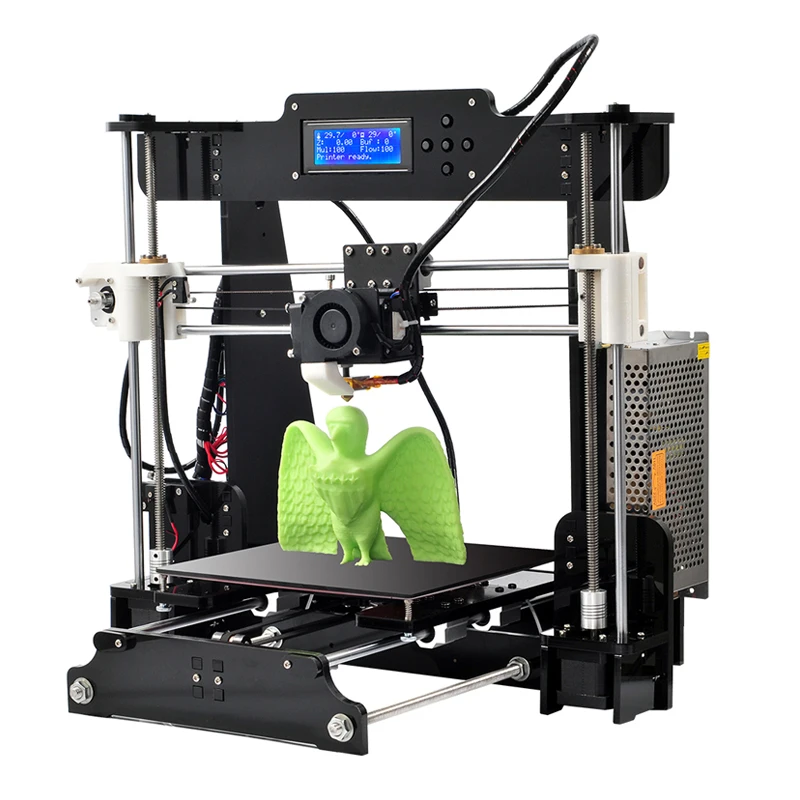
The large 7-inch touchscreen simplifies your workflow and makes it easy to switch settings or choose your model to print — made easier by Raise3D’s visual model selection previewer. And, if during printing you run into any problems with the power or any other error, the printer can resume from whenever it was stopped without issue.
Marking itself as one of the best 3D printer for business uses, it has some of the largest print areas, as well as an aerospace grade build plate offering excellent adhesion, durability, and preventing warping that can affect or ruin prints — as well as making prints easy to remove. It’s all fully enclosed, so you can effectively maintain and control the chamber temperature to minimize warping and prevent fumes from spreading.
If you want the workhorse benefits of the Raise3D Pro2 Plus, but don’t need the extra Z-axis height building, you can save a couple thousand dollars by going with their standard Pro2 model instead, with a 300mm maximum print height instead of the Pro2 Plus’ 605mm.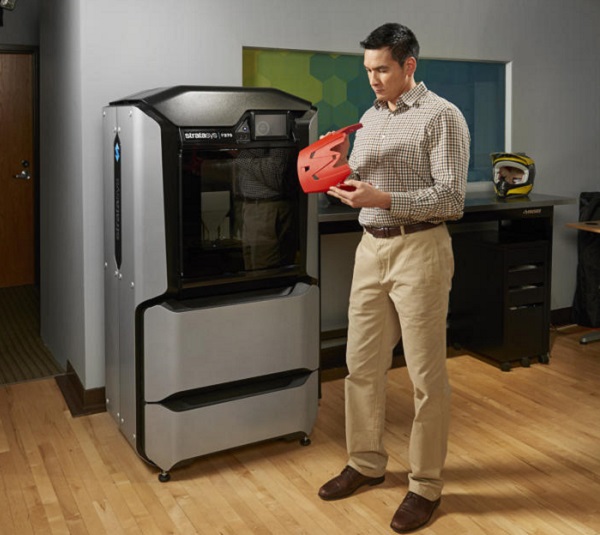
Intamsys Funmat HT Enhanced — professional 3D printer for PEEK & Ultem printing
- Price: $7,500 — Available on Matterhackers here
- Build volume: 260 x 260 x 260 mm
For those looking for a specialized PEEK and Ultem 3D printer, the Intamsys Funmat HT Enhanced is the best professional 3D printer for PEEK that’s in most small business’s budget. Costing $6,000 rather than the $20,000+ commonly seen among commercial 3D printers for PEEK, the Intamsys Funmat HT is a great entry-level production 3D printer.
With 90°C constant chamber temperatures, a 160°C heated build plate, and 450°C maximum extruder temperatures from its all-metal hot end, printing PEEK, PEKK, PPSU and Ultem are no problem. However, if you want to use it for printing PEEK as well as more standard plastics you can also do that, with interchangeable nozzles for different printing plastics like PLA and ABS, PC, Nylon, ASA, and more.
Therefore, the Intamsys Funmat HT is a great entry-level production 3D printer for high performance polymer printing. It can automatically level itself with its four advanced drivers offering great precision, and the industrial build platform quality and design features PEI film and glass ceramic materials for great durability and minimal deformation during printing — as well as being safe to use with biocompatible materials like PEEK that may be used to print medical or dental parts.
It can automatically level itself with its four advanced drivers offering great precision, and the industrial build platform quality and design features PEI film and glass ceramic materials for great durability and minimal deformation during printing — as well as being safe to use with biocompatible materials like PEEK that may be used to print medical or dental parts.
With PEEK’s extensive use in medical parts, electrical engineering, aerospace, dental, Ultem’s industrial uses, and PPSU’s medical applications, the Intamsys Funmat HT capitalizes on 3D printing’s fastest growing material segment, but at a low price. Intamsys sell their own Ultem and PEEK filaments, and overall, the Funmat HT Enhanced is one of the best 3D printers for small businesses looking to print high performance plastics to either create parts for other companies, or iterate in-house.The Intamsys Funmat HT Enhanced is an ideal professional 3D printer for PEEK without breaking the bank.
Some other articles you may be interested in:
- The best 3D printers for small business
- Best PEEK 3D printers
- Best industrial 3D printers
- Best 3D printers under $2,000
- Best metal 3D printers
10 Best Commercial & Professional 3D Printers In 2022
Are you dreaming of making industrial-quality parts at your SME? Well, stop dreaming and start printing!
Commercial 3D printers let even a tiny garage operation make parts NASA would send to space.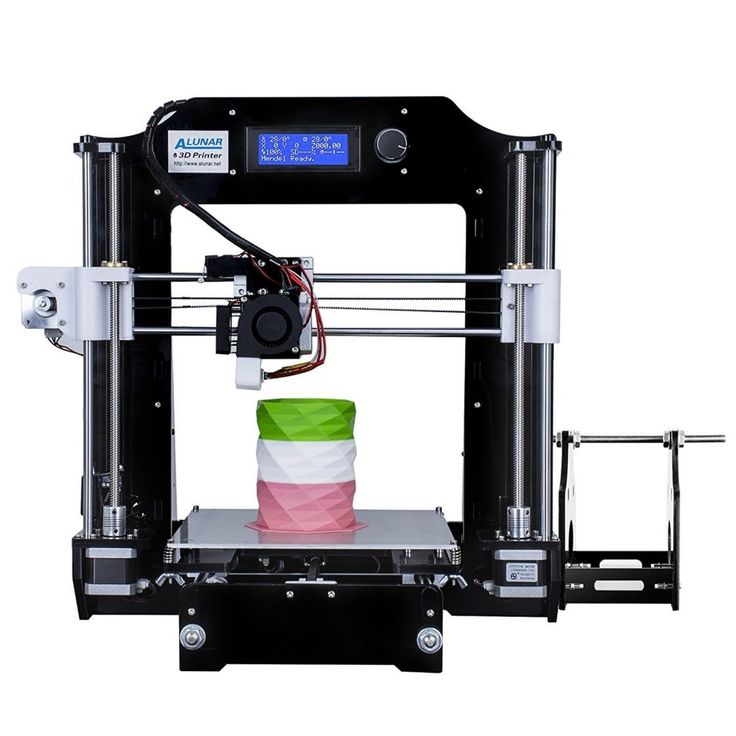 A professional 3D printer is a business partner you can’t afford to not have.
A professional 3D printer is a business partner you can’t afford to not have.
But we also know that with an SME budget, you can’t afford to pick the wrong 3D printer, either. You have to choose the right machine for the right application to avoid wasting its potential. But how do you do that?
Read on and meet the best commercial 3D printers in 2022.
Formlabs Form 3+
Check Latest Price
Raise3D Pro2 Plus
Check Latest Price
Fusion3 EDGE
Check Latest Price
Table of Contents
- Best Commercial 3D Printers At A Glance
- 1. Formlabs Form 3+ (Best Value)
- 2. Raise3D Pro2 Plus (Best Choice)
- 3. Fusion3 EDGE (Premium Choice)
- 4. Ultimaker S5 (Easy to Use)
- 5. Prusa i3 MK3S+ (Best for High-Quality Prints)
- 6. Dremel DigiLab 3D45-EDU (Best for School Use)
- 7. Zortrax M300 Dual (Best for Detailed Prints)
- 8.
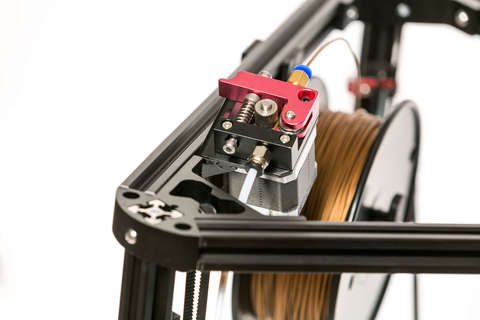 BCN3D Epsilon W50 (Best for Beginners)
BCN3D Epsilon W50 (Best for Beginners) - 9. MakerBot Method X (Best for Easy to Print)
- 10. Delta WASP 2040 Industrial X (Best for Fast Print)
- Industrial Quality at Small Business Budgets
- What Is a Commercial 3D Printer?
- What to Look for in a Commercial 3D Printer
- Uses of Commercial 3D Printers
- Conclusion
Best Commercial 3D Printers At A Glance
1. Formlabs Form 3+ (Best Value)
2. Raise3D Pro2 Plus (Best Choice)
3. Fusion3 EDGE (Premium Choice)
4. Ultimaker S5 (Best for Beginners)
5. Prusa i3 MK3S+ (Best for High-Quality Prints)
6. Dremel DigiLab 3D45-EDU (Best for School Use)
7. Zortrax M300 Dual (Best for Detailed Prints)
8. BCN3D Epsilon W50 (Best for Beginners)
9. MakerBot Method X (Best for Easy to Print)
10. Delta WASP 2040 Industrial X (Best for Fast Print)
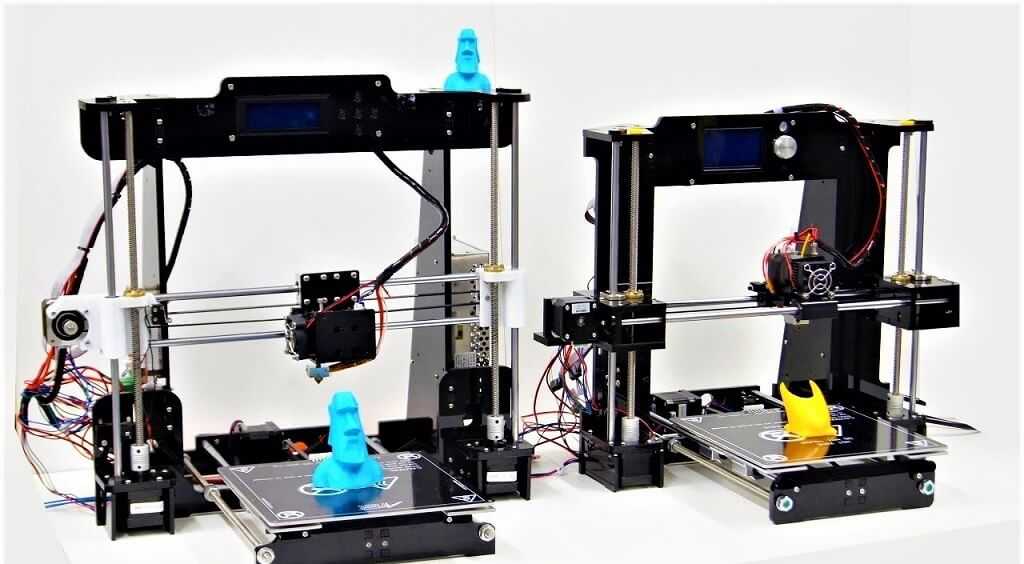 Formlabs Form 3+ (Best Value)
Formlabs Form 3+ (Best Value) 3D Printer Type: LFS | Materials: Resins | Build Volume: 145 x 145 x 170 mm
Ask any commercial SLA 3D printer user, and they’ll tell you Formlabs Form 3+ is the industry workhorse. That reputation is well deserved.
Form 3+ offers excellent print quality at a fantastic value.
With a layer resolution of only 25 microns, Form 3+ can accurately reproduce even the tiniest details. The advanced monitoring sensors ensure steady part quality.
On top of that, Formlabs has designed the printer to be highly automated. Just set it and forget it — your parts will come out great.
You can also print pretty much whatever you want. Form 3+ supports Formlabs’ extensive material range. It can produce anything from mechanical parts to accurate dental appliances and castable wax models for jewelry.
The printer doesn’t support third-party resins, though, so you’re locked to Formlab’s pricey options. The print chamber is also quite small and the speed (although better than its previous iterations) isn’t the fastest.
The print chamber is also quite small and the speed (although better than its previous iterations) isn’t the fastest.
But at a price below $4,000, we’ll forgive all that. Formlabs Form 3+ simply provides great versatility and value.
- Affordable
- Excellent part quality
- Wide material range
- No third-party material support
- Small print volume
- Slow-ish
Check Latest Price
2.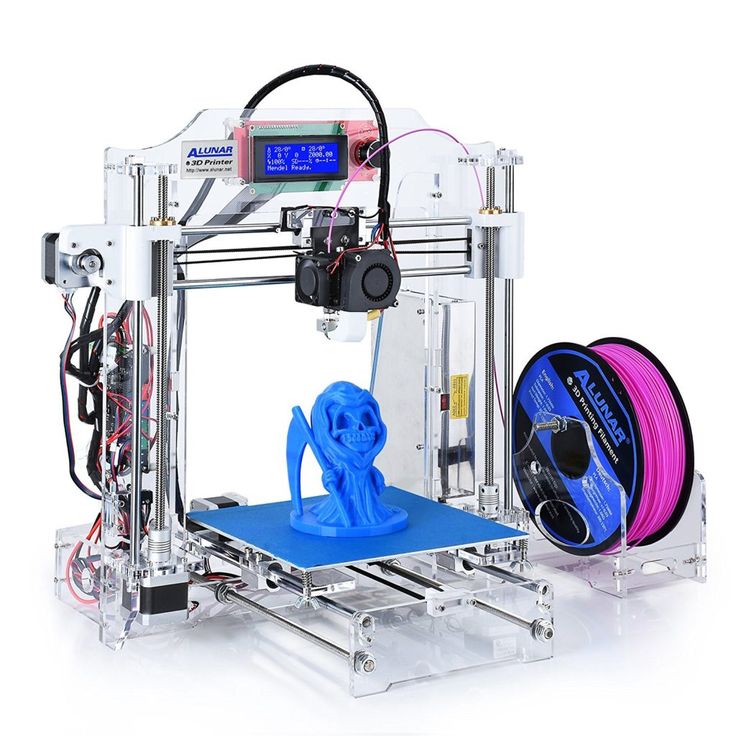 Raise3D Pro2 Plus (Best Choice)
Raise3D Pro2 Plus (Best Choice) 3D Printer Type: FDM | Materials: PLA, ABS, HIPS, PC (Polycarbonate), TPU, Nylon, TPE, PETG, Metal Infused PLA, Woodfilled PLA & Carbon Fiber Reinforced Materials | Build Volume: 305 × 305 × 605 mm
Freddy Mercury probably would’ve liked Raise3D Pro2 Plus. If you want it all and you want it now, this is your machine.
This award winner simply does everything you could need.
As a particular highlight, the dual extruder of the Pro2 Plus can print with two materials at once. You can mix any two options from its staggering material range into one part in the machine’s well-sized build chamber. This is one printer that really makes you create any part you want.
And you have a lot of options. With a maximum extruder temperature of 300°C (572°F), Pro2 Plus works with anything from basic ABS to advanced carbon fiber-reinforced nylons and more.
Oh, and that print quality. This is one of the most accurate FDM printers we’ve seen.
This is one of the most accurate FDM printers we’ve seen.
Pro2 Plus isn’t the most beginner-friendly 3D printer since it doesn’t have automatic bed leveling. But if you know what you’re doing, Raise3D Pro2 Plus is one of the best 3D printers money can buy.
- High accuracy and part quality
- Supports third-party filaments
- Low price
- Dual extruder
- Difficult calibration
- Some technical issues
- No steel nozzle included as default
Check Latest Price
3. Fusion3 EDGE (Premium Choice)
Fusion3 EDGE (Premium Choice) 3D Printer Type: FFF | Materials: PLA, ABS, ASA, Reinforced Materials including Carbon Fiber, Kevlar, and Fiberglass, Flexible, Nylons, PET/PETG & Polycarbonate | Build Volume: 355 × 355 × 368 mm
Fusion3 EDGE is true to its name — this is a cutting-edge 3D printer in many ways. It just launched in early 2022, but it’s already established itself as a great premium printer option.
As a unique quirk, EDGE uses an inexpensive surgical steel print tube instead of the usual screw-in nozzle. Just because it’s inexpensive doesn’t mean this part isn’t premium, though.
It allows materials to flow through effortlessly, giving EDGE a very fast printing speed. And even though it can’t match Raise3D Pro2 Plus, EDGE’s detail accuracy is still great.
The steel tube heats up to 320°C and can withstand abrasive reinforced filaments, like carbon fiber-filled nylon. Add to that support for third-party filaments and you have a lot of materials to choose from.
That all sounds great. So, what’s the catch?
Price, mostly. As a premium 3D printer, EDGE does have a high price tag. But with Fusion3 EDGE, you get what you pay for.
- Fast printing
- Reliable part quality
- Quiet and filtered enclosure
- Automatic maintenance reminders
- Pricey
Check Latest Price
4. Ultimaker S5 (Easy to Use)3D Printer Type: FDM | Materials: Tough PLA, TPU 95A, ABS, Nylon, TPU | Build Volume: 330 x 240 x 300 mm
Time is money, and time wasted on tweaking finicky printers is money lost. Ultimaker S5’s simple usability saves you both time and money.
Ultimaker S5’s simple usability saves you both time and money.
The S5 integrates seamlessly with Ultimaker’s own Cura software. Together with the clear touchscreen, the printer’s advanced automated features are straightforward to operate. Just a few clicks and the S5 starts printing.
The easy usability translates directly to high productivity. It’s no wonder Volkswagen, Siemens, and others like this printer.
The S5 also offers good printing quality. It has dual extruders for multi-material printing and a heated print bed for reliable part quality.
Another nice feature is the S5’s modularity. It has swappable print cores that enable you to print with more than 200 materials — and even metal filaments.
The simple performance comes at a high price, though. The S5 is also quite slow, compared to the previously featured printers, and its heated print bed is notorious for cracking.
But if you’re looking for a printer that keeps going with little intervention, Ultimaker S5 is your choice.
- Simple setup and operation
- Good print quality
- Plenty of material options
- Modular print cores
- Expensive
- Slow printing
- Fragile print bed
Check Latest Price
5. Prusa i3 MK3S+ (Best for High-Quality Prints)3D Printer Type: FDM | Materials: PLA, PETG, ASA, ABS, PC, HIPS, Flex, Nylon, Carbon filled & Woodfill | Build Volume: 250 x 210 x 210 mm
Don’t judge a book by its cover or a 3D printer by its price. At only $1,000, Prusa i3 MK3S+ punches way above its weight. It produces high-quality prints you wouldn’t expect from such an affordable machine.
At only $1,000, Prusa i3 MK3S+ punches way above its weight. It produces high-quality prints you wouldn’t expect from such an affordable machine.
Sure, the minimum layer thickness isn’t as impressive as with Raise3D Pro2 Plus or Fusion3 EDGE. But layer resolution isn’t the end-all-be-all of part quality.
The i3 MK3S+ features predefined printing profiles for Prusa filaments. Just pick the right profile — you’ll get reliably successful prints with almost zero effort. You can quickly alter the default profiles to match third-party filaments as well.
And you can print with almost any filament you want.
The i3 MK3S+ has a high-quality extruder that can reach 300°C. Carbon fiber, nylon or other engineering filaments are within your reach. And they print as effortlessly as anything.
You’ll want to get an enclosure to prevent warping with advanced filaments, though. The Prusa also can’t make huge parts, but what it does make is of consistently high quality.
- Reliably great part quality
- Affordable
- Big, helpful online community
- Simple to use
- No enclosure
- Small print volume
- Laggy software
Check Latest Price
6. Dremel DigiLab 3D45-EDU (Best for School Use)3D Printer Type: FDM | Materials: PLA, ECO ABS, PETG & Nylon | Build Volume: 254 x 152 x 170 mm
To get good at something, you should start young. Dremel DigiLab 3D45-EDU is a perfect 3D printer for teaching future additive manufacturing experts. Just look at the awards it’s received.
But what makes it so great for schools?
DigiLab 3D45 has a perfect balance of affordability, performance, and ease of use. You can set up and calibrate the printer in 15 minutes. Then you’re ready to start showing students how 3D printing works.
While the Dremel isn’t the most accurate machine, it’s still a professional 3D printer. It produces detailed prints of good quality.
As the students learn, the 3D45 lets them adjust the settings more accurately. The 3D45-EDU package even comes with 30 lesson plans from the 3rd to 12th grades.
The build chamber isn’t huge, but it’s more than enough for school use. Also, Dremel claims 3D45 can handle nylon, but the 280°C extruder temperature seems a bit low for that.
Nonetheless, Dremel DigiLab 3D45-EDU is a great package for getting students excited about 3D printing.
Learn more in our guide of the best 3D printers for schools.
(NOTE: Dremel no longer manufactures 3D printers and has licensed its brand to 3PI. The machines are the same, but it’s good to know who to talk to if you need technical support.)
- Included lesson plans
- Easy setup and operation
- Good part quality
- Small print volume
- Slow speed
- Limited materials
Check Latest Price
7.3D Printer Type: LPD Plus | Materials: Most Z-Materials, PLA, Tough PLA, ABS, ASA, PETG, CPE, Nylon, TPU, TPE & PVA | Build Volume: 265 x 265 x 300 mm
Zortrax M300 Dual will surprise you. It creates highly detailed prints — despite the on-paper rough and inaccurate 150-micron layer height.
How on earth does this 3D printer do it?
The M300 Dual’s secret lies in the Layer Plastic Deposition (LDP) technology. It’s essentially Zortrax’s own spin of fused filament fabrication (FFF/FDM). Tailor-made for this system, LDP makes use of M300’s accurate leveling and calibration sensors to deliver very high-quality prints.
Another part of the puzzle is Zortrax’s proprietary filaments. The 3D printer has a complete Zortrax ecosystem, so it knows precisely how to handle the materials to deliver fine details beyond its specs.
The dual extruder also prints with two nozzles, one distributing Zortrax’s water-soluble support material. This is a really handy invention since you can just wash the supports away after printing.
Of course, that means you need to buy Zortrax’s filaments. You can use third-party materials, but you may not get as fine detail.
Zortrax M300 Dual will bring more detail than you’d expect to all small businesses.
- Excellent detail and part quality
- Water-soluble supports
- Practically locked to Zortrax filaments
- Mediocre volume
Check Latest Price
8. BCN3D Epsilon W50 (Best for Beginners)3D Printer Type: FFF | Materials: PLA, PVA, PETG, TPU, ABS, PP & PA | Build Volume: 420 x 300 x 400 mm
An entry-level 3D printer often sacrifices production power for simple usability. It’s a good thing, then, that BCN3D Epsilon W50 isn’t an entry-level 3D printer. It’s a professional machine that’s easy enough for beginners to use.
The printer’s quick to set up and calibrate. The most laborious part is print bed calibration — it’s not hard, just time-consuming. Even if it’s your first 3D printer, you’ll get Epsilon W50 ready to go in about 20 minutes.
And it still brings serious power to your workshop.
Epsilon W50 uses an independent dual extruder system. It can print two materials at once, print mirrored component halves, or two identical parts at once. Combined with the big print volume, you’ll enjoy industrial-level productivity.
One thing deterring beginners might be Epsilon W50’s admittedly high price point. But think of this high-end 3D printer like a good pair of boots — it costs more upfront but it will keep printing reliably for years.
In a nutshell, BCN3D Epsilon W50 is a beginner-friendly machine with veteran-level performance.
- Easy and reliable printing
- Independent dual extruder system
- Large print volume
- Expensive
- Default hot end doesn’t support reinforced filaments
- Long bed calibration process
Check Latest Price
9. MakerBot Method X (Best for Easy to Print)3D Printer Type: FDM | Materials: PLA, Tough PLA, PETG, PETG-ESD, Nylon, PC-ABS, ABS, ASA & PVA | Build Volume: 190 x 190 x 196 mm
It just keeps going and going and going… And that’s good. MakerBot Method X is the commercial 3D printer you need for effortless, reliable production.
Method X has been designed from the beginning to make printing as easy as possible. It has plenty of features, like thermal regulation and a temperature control filament drawer, that contribute to consistent and predictable part quality.
But MakerBot recently pulled another ace from its sleeve.
The company recently released a new water-dissolvable support material. It rinses pretty cleanly off even under tap water, removing the need for extensive post-processing.
Imagine that — no cutting off supports with FDM.
That said, Method X isn’t a flashy printer. It has a small build chamber and you need to buy separate extruders to make full use of the admittedly wide material range.
But that’s Method X for you. It doesn’t boast, it doesn’t grumble — it just prints.
- Extremely reliable
- Simple to use
- Wide material range
- Needs add-ons for reinforced materials
- Default slicer could be better
Check Latest Price
10.3D Printer Type: FDM | Materials: PLA, ABS, PETG, TPU, TPE, Polypropylene, Polycarbonate, PC+ABS, PPS, PMMA, PVA & PA | Build Volume: Ø 200 x h 400 mm
Do you feel the need? The need for speed? Delta WASP 2040 Industrial X is the speed demon you’re looking for.
The WASP achieves lightning-fast printing thanks to three robotic arms that move its extruder around. Automatic calibration makes operating this futuristic solution simple.
But wait, there’s more than speed to the WASP!
Its dual gear filament driver pushes material through at a steady rate, resulting in good detail quality. The accuracy doesn’t beat printers like Raise3D Pro2 Plus, but the speed sure does.
You might expect constant maintenance at these speeds, but don’t worry. Delta’s Hot and Cold system controls the machine’s internal and external temperature. You won’t have to constantly blow money on spare parts.
As a cherry on top of it all, the WASP supports third-party materials. The material range isn’t as extensive as with some other printers, but it should keep you in business for a long time.
That’s a good description for Delta WASP 2040 Industrial X, actually. Printing with it is like watching Usain Bolt run a marathon.
- Lightning-fast printing
- Affordable
- Low maintenance
- Mediocre detail
- Bulky machine
Check Latest Price
Industrial Quality at Small Business Budgets
Source: Youtube Marvin Medina (3D Printed Cellphone Case)Commercial 3D printers are great equalizers. They’re quickly changing the SME landscape by narrowing the gap between small and large businesses.
The best professional 3D printers make printing plastics easy, fast, and affordable. You can produce components with detail quality comparable to injection molding and strength that can surpass metal.
But not just every 3D printer deserves the title of a “commercial 3D printer.” What is it that makes a 3D printer professional?
What Is a Commercial 3D Printer?
Source: Youtube Tech HD (3D Printed VW Bus Toy)Commercial 3D printers — also called prosumer or professional 3D printers — sit in the space between consumer 3D printers and full-blown industrial 3D printing behemoths.
In general, a commercial 3D printer costs less than $10,000. They have features that only the most advanced hobbyists might need but which are valuable for professional applications.
At the same time, they’re not meant for large-scale mass production like industrial printers. In short, they’re a low-cost method for SMEs to make use of industrial-grade materials.
What to Look for in a Commercial 3D Printer
Source: Youtube Tech HD (Car Parts)Are you about to buy the first printer for your business? You might feel a bit lost among all the options for professional 3D printers — and we sympathize.
When browsing through our list of machines, keep an eye on these details to find the right machine for you.
3D Printing Technology
Different types of 3D printers excel at different tasks. If you need strong parts that don’t necessarily look amazing, FDM technology can create components tougher than metal. But if intricate detail is your key to success, SLA resin printers will blow you away with their detail quality.
Printing Performance
Pay attention to the maximum nozzle temperature (with FDM printers) and print speed. The higher the maximum temperature, the more materials you can print with. And, of course, the faster you can print, the higher your productivity.
Material Range
Good professional 3D printers will support a wide variety of materials, from flexible ones to reinforced engineering plastics. But wider material compatibility can add to the price. If you know you only need one or two materials, don’t sink money into a machine that can do it all
Build Volume
Commercial applications often require you to create large prints. Make sure your printer can build big enough parts — otherwise, it’s just a waste of money.
Printer Features
High-end 3D printers often come with advanced features, like a heated print bed and chamber, a built-in camera, and more. These aren’t just expensive toys. You want them to ensure consistently high part quality.
Uses of Commercial 3D Printers
Source: Youtube 3d Printed ProfitsProfessional 3D printers are versatile machines that can benefit many different types of SMEs. If you create a product, you can probably reduce costs, shorten lead times, and streamline workflows with a 3D printer. Here are just some of their leading commercial uses.
Part Design & Prototyping
3D printing enables a higher degree of design freedom when compared to traditional manufacturing. Combined with materials that can create true-to-life surface textures and detail, you have a powerful prototyping technology in your hands.
The best professional 3D printers produce accurate prototypes in a matter of hours — featuring shapes that are impossible for conventional production methods. You can save time and money by creating your prototypes in-house.
Small-Scale Manufacturing
Commercial 3D printers support end-use ready materials, such as nylon or PEEK, and produce durable parts with smooth surfaces. You can print ready-to-sell components for cars, drones, or functional tools.
Alternatively, you can print spare parts for machinery you use for different jobs. Save money and keep your machines running, how about that?
Medical Applications
SLA resin printers — like Formlabs Form 3+ we listed — can create accurate medical appliances from durable, biocompatible materials. These printers are quickly becoming standard fixtures in every dentist’s office, for example. Read our review of the best dental 3D printers here.
But even filament printers have their medical uses. They let doctors produce all kinds of useful tools, like hooks, trays, or medical models.
Architecture
Every major building began its life as a blueprint and a model. In the past decade or so, a professional 3D printer has become an architect’s best friend.
Building models by hand can take weeks and cost a fortune. Now, imagine designing a building in 3D modeling software and printing it overnight for a meeting in the morning.
Conclusion
Commercial 3D printers have done to SMEs what industrial printers did to large-scale businesses. They’ve made manufacturing faster, cheaper, and more accessible. A professional 3D printer will be a welcome addition to your business.
If you’re still wondering what the best commercial 3D printers for you are, here are our suggestions:
- For the highest detail quality, consider Formlabs Form 3+ or Zortrax M300 Dual.
- For durable end-use parts, go for Ultimaker S5 or Makerbot Method X.
- Dremel DigiLab 3D45-EDU introduces professional 3D printers to classrooms.
- Finally, the one printer to rule them all is Raise3D Pro2 Plus.
Best 3D Printer of 2021
You may not know this, but the best 3D printers can be a great tool for photographers as well as other creatives and DIYers. They allow you to make attachments for your cameras, such as lens hoods and lens caps, and because you design them, they are the perfect size for your devices.
What's more, the best 3D printers can print your designs quickly, so you don't have to go to a store or wait for an online order. With a little time and imagination, the best 3D printers allow you to create completely unique tools and accessories that can really add value to your photography.
There have also been examples of people using 3D printers to create their own large format retro cameras. And it's even possible to 3D print your own 3D textured plastic photographs, known as lithophanes.
In fact, 3D printing technology has come a long way in the last few years, and there are some brilliant 3D printers that are affordable and small enough to fit in studios and desktops.
The quality and cost of 3D prints have also improved over the years, making 2020 the perfect time to pick the best 3D printer for your needs.
In this guide, we'll show you the best 3D printers money can buy in 2020, for a variety of uses and budgets. From affordable and compact 3D printers that are ideal for hobbyists and anyone looking to get started with 3D printing, to large professional 3D printers that can create professional 3D prints in large sizes and volumes.
1. XYZprinting da Vinci Mini +
Best Budget 3D Printer
Print technology: Fused fiber production | Building area: 150 x 150 x 150 mm | Minimum layer resolution: 100 µm | Maximum layer resolution: 400 µm | Dimensions: 390 x 335 x 360 mm | Weight: 6. 85 kg
If you are looking for a budget 3D printer, there really is no better option than XYZprinting da Vinci Mini + .
Compared to some of the other 3D printers in this guide, the XYZprinting da Vinci Mini+ has a price tag that won't do much damage to your bank balance, but that doesn't mean you have to sacrifice print quality.
In fact, the 3D prints are very impressive considering the low price and small size of this 3D printer.
In terms of size, the XYZprinting da Vinci Mini+ (as the name suggests) is small enough to fit on a desk or in a studio so you don't have to make room for a huge 3D printer.
2. Ultimaker 2+
Best 3D printer for the advanced user
Print technology: Fused deposition simulation | Thread diameter: 2.85 mm | Building area: 223 x 223 x 305 mm | Minimum layer resolution: 20 microns | Maximum layer resolution: 600 µm | Dimensions: 342 x 493 x 588 mm | Weight: 11. 3 kg
Ultimaker is a company that proves you can create stylish and desirable 3D printers. While many of the 3D printers in this guide have fairly simple and functional designs, the Ultimaker S3 offers a lightweight class - without skimping on features or print quality.
It can perform a wide range of 3D printing tasks and the print quality is excellent. There are also a large number of accessories to help you turn the Ultimaker S2+ into an indispensable tool for your needs, and it has replaceable cartridges, an intuitive touch screen interface, and Cura software for creating 3D prints.
However, this comes at a cost, which may put some people off. But, if you have the budget, this is one of the best 3D printers you can buy right now.
3. AnyCubic Photon
MSLA Best Budget Printer
Print Technology: Stereolithography | Resin type: 405 nm | Building area: 115 x 65 x 155 mm | Minimum layer resolution: 25 µm | Maximum layer resolution: 100 µm | Dimensions: 220 x 200 x 400mm
MSLA (Stereo Mask Lithography) printers are becoming more popular, but may continue to grow be quite expensive. If you're looking to try out a new technology that delivers faster print speeds and better accuracy, then AnyCubic Photon is the way to go.
While it doesn't have many of the more advanced features like resin bath tilt, temperature or resin level sensors that you'll find on more expensive models, it's a great starting point for this type of 3D printing. The included software is good and you can start printing right away. Just be aware of the extra maintenance required for MSLA 3D printing - you need to thoroughly clean the parts between each print.
4. Crazy3DPrint CZ-300
One of the best 3D printers for people on a budget
Print technology: Fused fiber production | Building area: 300 x 300 x 300 mm | Minimum layer resolution: 100 µm | Maximum layer resolution: 400 µm | Dimensions: 534 x 503 x 582 mm | Weight: 16.5 kg
Many of the 3D printers featured on this page are very expensive, but if you don't want to spend a fortune, there are also brilliant budget options like the Crazy3DPrint CZ-100 which is perfect for beginners. Despite the low price, it offers one of the largest print platforms of any 300 x 300 x 300mm 3D printer. It's also fairly easy to set up, and you'll be making great 3D prints in no time, with impressive quality considering the low price.
The open design also means you can watch your 3D models being created - a fun experience.
5. Original Prusa i3 MK3s
One of the best all-round 3D printer
Print technology: Fused deposition simulation | Thread diameter: 1.75 mm | Building area: 250 x 210 x 210 mm | Minimum layer resolution: 50 microns | Maximum layer resolution: 350 µm | Dimensions: 550 x 400 x 500 mm | Weight: 7kg without spool
Prusa Research is a big name in 3D printing and its i3 MK3S kit is its flagship model. Powerful new features such as fiber sensors, Bondtech extruder, P.I.N.D.A. 2 and the E3D V6 lead nozzle deliver the highest print quality, making the Prusa i3 MK3s one of our favorites.
At around $900 / £700 it's definitely an investment, but it's not the most expensive 3D printer on the market and strikes a good balance, offering advanced features without a sky-high price tag that might put many off. Not that this price is for a kit that requires little assembly. You can also order it ready and tested for $1200 / £899.
6. LulzBot Mini 2
Best Compact 3D Printer
Print technology: Fusion modeling | Building area: 160 x 160 x 180 mm | Minimum layer resolution: 50 µm | Maximum layer resolution: 400 µm | Dimensions: 457 mm x 339 mm x 607 mm | Weight: 9kg
LulzBot Mini 2 is the best 3D printer for people who want something compact and easy to carry around. The new version 2 has increased print speed and reduced noise, and is open source, which means there is a community working on updates and accessories for the printer and constantly improving it.
It's smaller and more portable than many of its 3D printer competitors, but that doesn't mean you're stuck with smaller prints.
In fact, the LulzBot Mini 2 offers 20% more build volume than the previous model without increasing the actual size of the printer. This makes it a great choice for people with limited space.
7. CEL RoboxDual
Excellent mid-range 3D printer
Print technology: Welding simulation | Building area: 210 x 150 x 100 mm | Minimum layer resolution: 50 µm | Maximum layer resolution: 500 µm | Dimensions: 410 x 340 x 240 mm
If you want a better 3D printer that offers a bit more flexibility over budget options on this page, but you still don't want to pay the prices that professionals and corporate users pay, then a mid-range 3D printer. is probably the best fit for your needs and in our case the RoboxDual CEL-UK is perfect for your needs.
RoboxDual has been designed to adapt to any level of user, from beginners to more advanced users, and offers features such as interchangeable tool heads, automatic filament loading and bed leveling to get you up and running in no time.
8. FormLabs 3 Form
Best SLA Printer
Print Technology: Stereolithography | Resin Type: Multiple | Building area: 145 × 145 × 185 mm | Minimum layer resolution: 25 µm | Maximum layer resolution: 300 µm | Dimensions: 405 x 375 x 530 mm | Weight: 17.5 kg
If you want a little more flexibility when 3D printing, then an SLA 3D printer like FormLabs is for you Form 3. While many 3D printers use FDM (Fused Deposition Modeling), SLA (Stereolithography Apparatus) 3D printers can be used with more durable and specialized materials, including heat resistant ones, which can be useful for photographers who want to create your own camera and lighting. attachments. SLA printers can also print at higher resolutions, so they are more accurate and can create more complex designs, but they are also much slower. 9The 0003
Form 3 is the smallest of the FromLab 3D printers, which uses a high-precision laser that delivers unparalleled print quality, far superior to FDM printers, and the print quality offered here is excellent. However, it is expensive.
9. TRILAB DeltiQ 2
Excellent choice for professional prints
Print technology: Fused deposition simulation | Thread diameter: 1.75 | Building area: 250 x 250 x 300 mm | Minimum layer resolution: 50 microns | Maximum layer resolution: Depends on nozzle | Dimensions: 410 × 500 × 810 mm | Weight: 10kg
The DeltiQ 2 is one of the most beautiful 3D printers featured in this roundup, as well as one of the most versatile. Unlike other 3D printers, this one has a print head that is suspended from three fully articulated arms. This means that the printout is completely still while printing, resulting in a significant improvement in print quality. This also means that the 3D printer takes up much less horizontal space. It also comes with a ton of features, including wireless mobile control and the Duet 2 interface.
10. CEL RoboxPro
Great for large scale prints
Print technology: Fused deposition simulation | Thread diameter: 1.75 mm | Building area: 210 x 300 x 400 mm | Minimum layer resolution: 50 µm | Maximum layer resolution: 500 µm | Dimensions: 513x508x605 mm | Weight: 26kg
RoboxPro is from the same team as the RoboxDual featured earlier in this guide. This one is geared more towards professionals who require large prints and has some brilliant features such as auto filament loading, auto bed leveling, Wi-Fi, network printing and interchangeable tool heads.
This is a great 3D printer for creating products you will eventually sell, so if you're not looking for a commercial 3D printer it's probably not for you - there are plenty of great budget alternatives out there. However, if you have big ambitions for 3D prints, you should get them. As long as you have enough budget.
2D Printing Guides:
• Best Large Format Printer
• Best Photo Printing Online: Best services online.
• Best Photo Printer 2021 : Desktop Photo Printer Comparison
• Best Portable Printers
The top 10 3D printers available to buy in 2020
3D printing is relatively new. Therefore, special attention is riveted to it, both experienced and novice users of office equipment. In this article, we will present a list of the top ten 3D printers available for purchase in 2020. Here you will find devices that meet high quality standards, are simple and easy to use, and are also capable of producing large volumes of products. After reviewing the information provided, you can easily choose a 3D printer that suits your requirements.
In the list you will find the following 3D printer models:
- Original PRUSA i3 MK3s
- CEL-UK RoboxPro
- Ultimaker S3
- FormLabs Form 3
- Original PRUSA SL1
- TRILAB DeltiQ 2
- Raise3D E2
- CEL-UK RoboxDual
- LulzBot Mini 2
- Snapmaker 2.0 A350
Immediately, we note that all printers are diverse and suitable for use in various fields of activity. Therefore, we did not list them in any particular order. Purchasing any printer from the list is a smart financial investment. | Size: 550x400x500 mm | Weight: 7 kg
Advantages:
- excellent working speed;
- high quality printing.
Disadvantages:
- lack of protective walls.
Description: Josef Pruscha is a leader in 3D printing. Their products are famous for their high reliability and long service life. The flagship model is the Original PRUSA i3 MK3s. It is characterized by high speed, low noise and excellent print quality. The most innovative developments are used in the production of the device: Bondtech extruder, P.I.N.D.A. 2, E3D V6 nozzle and thread sensor. The main feature of the printer is that it can be used for a variety of purposes. It is worth noting that the device is supplied both in assembled form and as a kit for assembly.
3D printer for business
Model:
Cel -uk RoboxPro
Characteristics: Methods: Methods Methods: Material: thread 1.75 mm | Working area: 210x300x400 mm | Layer thickness: 50-500 µm | Size: 513x508x605 mm | Weight: 26 kg
Features:
- interchangeable print heads;
- network connection option.
Disadvantages:
- oversized.
Description: CEL-UK is a leader in 3D printing innovation. Their Robox series printers are the most functional in the FDM class. The flagship model CEL-UK RoboxPro is a direct proof of the above words. The device has a huge set of functions, including: auto-filament, automatic layer alignment, Wi-Fi and the ability to print over a network. In addition, the closed design and interchangeable print heads make it the best choice for businesses.
3D printer for educational institutions
Model:
Ultimaker S3
Characteristics: Modeling Methods: Netting Methods: Material: thread 2.85 mm | Working area: 230x190x200 mm | Layer thickness: 20-600 µm | Size: 394x489x637 mm | Weight: 14. 4 kg
Advantages:
- easy to connect to the network;
- high quality printing.
Disadvantages:
- high price.
Description: Ultimaker has been attracting attention ever since 3D printing began to take off. Although representatives of the company have only recently begun to use modern open source software. The new Ultimaker S3 is valued for its fast speed, robust design and excellent print quality. The main features include replaceable cartridges, a touch-screen display and a Cura-branded slicer. Ease of use makes the device indispensable for educational institutions.
3D printer SLA
Model :
Formlabs Form 3
2222 Material: resin Multiple | Working area: 145x145x185 mm | Layer thickness: 25-300 µm | Size: 405x375x530 mm | Weight: 17. 5 kg
Pros:
- high print quality;
- large selection of materials.
Flaws:
- prints need to be reworked (cleaning and trimming).
Description: FormLabs manufacture SLA 3D printers. These devices use a special liquid resin as the main material for printing. Form 3 is the most compact device in the series. But because of the precise laser that guarantees the highest quality prints, this printer is most suitable for the production of product prototypes, jewelry and various castings. The device is considered the most original 3D printer available on the market.
3D printer MSLA
Model:
Original Prusa SL1
Characteristics: Technology: technology: 6 kg
Pros:
- high print quality;
- large selection of materials.
Flaws:
- prints need to be reworked (cleaning and trimming).
Description: With the creation of the Original PRUSA SL1, Josef Prusha's company was able to conquer the SLA 3D printer market (previously they worked only in the field of FDM technologies). True, the device was classified under the MSLA subcategory, due to the fact that it uses an LCD matrix and an ultraviolet LED backlight for resin processing, instead of standard high-precision lasers. Despite the fact that the printer consists of cheap components, the print quality meets the highest standards.
3D printer DELTA
Model :
Trilab Deltiq 2
Models 222222 2222 22 2 75 mm | Working area: 250x250x300 mm | Layer thickness: from 50 µm (nozzle dependent) | Size: 410x500x810 mm | Weight: 10 kg
Advantages:
- advanced technology;
- versatility and versatility of application.
Disadvantages:
- difficult to master the printer.
Description: In this 3D printer, the print head is mounted on 3 hinged supports. This is what distinguishes it from conventional 3D printers. This approach allows you to reduce the space occupied by the device, as well as the amount of additional equipment used. At the same time, TRILAB DeltiQ 2 is characterized by a large working area and a wide range of features. The device has an E3D hotend extruder and a Wi-Fi Duet 2 panel. In addition, the printer can be connected and controlled from a smartphone.
3D printer for work
Model:
Raise3D E2
9000 9000
Characteristics:
Technology: Modeling method Technology: The method of pressure method | Material: thread 1.75 mm | Working area: 330x240x240 mm | Layer thickness: 20-250 µm | Size: 607x596x465 mm | Weight: 40 kg
Features:
- high resolution;
- touch screen display.
Disadvantages:
- significant size and weight.
Description: Raise3D E2 is a printer capable of producing high quality FFF prints. Great for home, education, medical and business. The printer is equipped with two independent extruders. Has a strong and reliable design. In addition, the 3D printer is easy to operate and maintain. Such an apparatus will be able to meet the needs of any consumer involved in modeling, design or design. High quality of the press is provided with automatic calibration of a platform.
3D printer for home and office
Model:
CEL -UK ROBOXDUAL
Technology method: 9000 Technology method:
Advantages:
- robust construction;
- easy operation.
Disadvantages:
- use only branded consumables.
Description: The printer went on sale in 2016, but is still the best in its segment. Equipped with a dual extruder, smart spools, autoloader, self-leveling and flexible platform, the CEL-UK RoboxDual allows you to quickly prepare the material, as well as fully control the printing process. The device is adapted to work in any conditions. Therefore, it is great for both home and industrial use.
3D printer for newcomers
Model :
Lulzbot Mini 2
Characteristics: Models Technologies: Modeling Models: Material: thread 2.85 mm | Working area: 160x160x180 mm | Layer thickness: 50-400 µm | Size: 457x339x607 mm | Weight: 9 kg
Advantages:
- Open source software;
- ease of operation.
Disadvantages:
- lack of protective walls.
Description: If you are just learning the basics of 3D printing, then start with the LulzBot Mini 2 printer. Another important advantage of the device is its moderate overall dimensions. The compact design and light weight allow this printer to be placed on a typical desktop. | Size: 645x480x580 mm | Weight: 9.8 kg
Advantages:
- multifunctional;
- structural strength.
Disadvantages:
- delay between mode changes.
Description: Snapmaker 2.0 A350 is a multifunctional device with second generation replaceable modules. The product is capable of performing the functions of a 3D printer, laser engraver and CNC router. Updated filament sensors and an auto-leveling flexible bed ensure high-quality prints.






